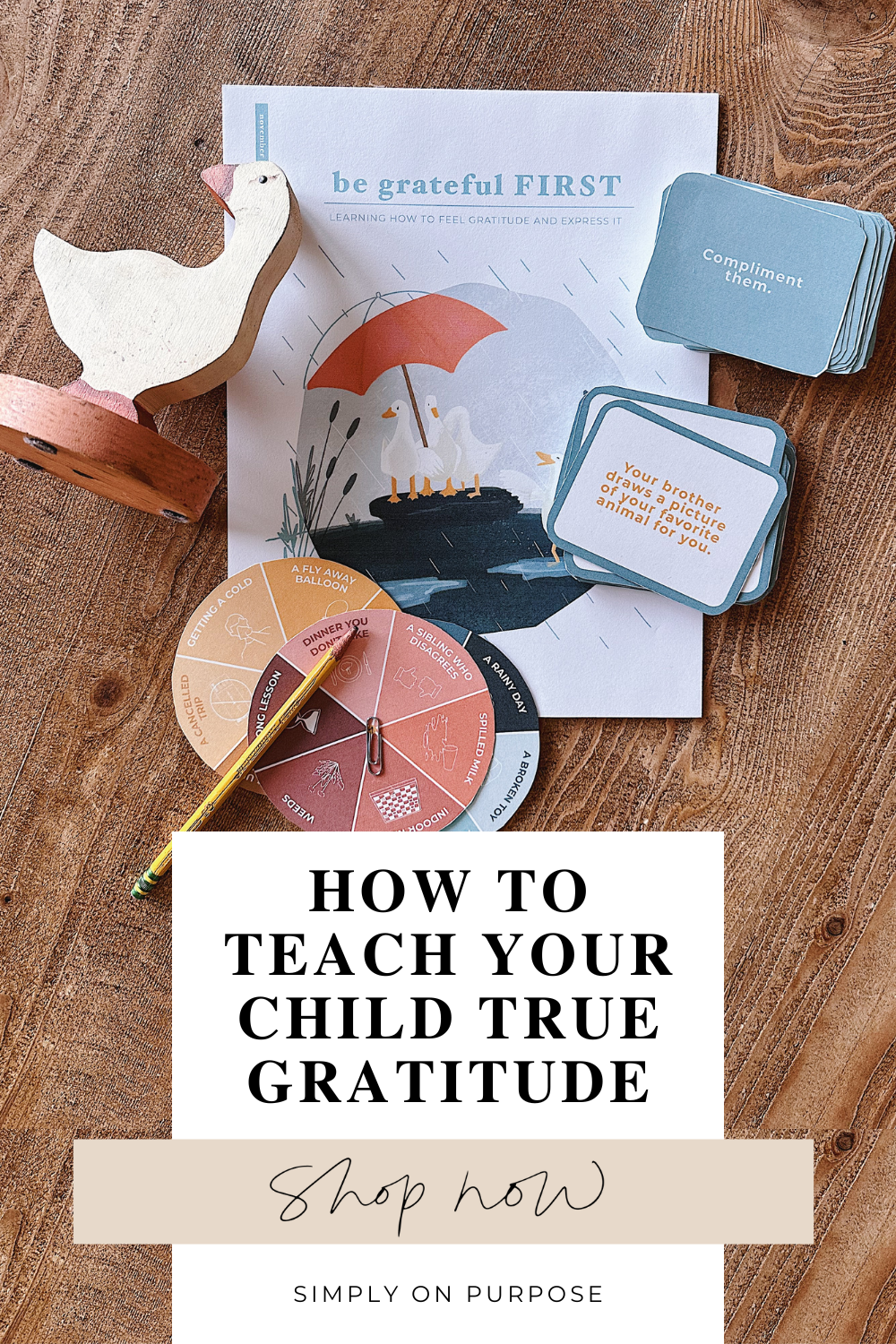When my kids walk out the door every morning, I call out, “Gratitude first!” They know exactly what this means: start the day by looking for things to be thankful for. It’s more than a habit—it’s a mindset that has transformed how they see the world.
And here’s the secret I’ve discovered: gratitude comes first. It’s the gateway to real joy. You can’t wait to feel happy and then decide to be grateful. It works the other way around! When we teach our kids to lead with gratitude, we’re giving them a powerful tool for happiness and resilience.
Why Gratitude Matters
Gratitude is the antidote to the entitlement and complaining that can creep into any home. It shifts focus away from what’s lacking and instead highlights the abundance already present. A grateful heart doesn’t just make a child happier—it can improve relationships, boost resilience, and even strengthen mental health.
But teaching true gratitude is more than reminding kids to say “thank you.” It’s about helping them feel thankful in all situations, even when things don’t go their way. That kind of gratitude takes practice, and it’s a skill every child can learn.
A Hands-On Approach to Gratitude
If your child struggles with feeling or expressing gratitude, this resource is perfect for your family! I’ve created a Teach Me How printable titled, “Be Grateful First: Learning How to Feel Gratitude and Express It,” filled with activities designed to make gratitude fun and meaningful. Here’s what it includes:
- A lesson in finding gratitude everywhere: Kids learn to see the silver lining, even in challenging situations.
- A game for exploring ways to show gratitude: This activity introduces dozens of creative and thoughtful ways to express thanks to others.
- Role plays for practicing gratitude in action: These scenarios help kids get comfortable expressing gratitude in their daily lives.
The printable comes with everything you need to teach this important life skill: a lesson plan, an engaging activity, discussion questions, a visual reminder, and role plays.
Bring Gratitude Into Your Daily Life
One of the easiest ways to encourage gratitude in your home is to make it part of your daily routine. My morning call out of, “Gratitude first!” is just one example of how to bring gratitude to the forefront of our minds. Small practices like this build a foundation of thankfulness that helps kids navigate life’s ups and downs with a positive outlook. Here are some other ideas for you and your kiddos:
- Reflect at the Dinner Table or Before Bed: As a family or individually, reflect on the best part of your day and what made you thankful.
- Practice Active Listening: Show gratitude for others’ time and presence by giving them your full attention when they speak.
- Do Random Acts of Kindness: Small acts, like helping bring in groceries or helping a sibling with their chores, show appreciation through actions.
- Compliment Others: Give genuine compliments to friends, family, or even strangers. It brightens their day and shows appreciation.
- Show Physical Affection: spontaneous hugs, back scratches, and even high fives can show how much you are grateful for someone in your life.
And don’t forget to model gratitude yourself! When kids see you expressing thanks, they’re more likely to do the same. Whether you’re grateful for a kind gesture, a sunny day, or the chance to spend time together, let your kids hear it.
A grateful heart is a happy one!
If you are looking for more ways to help your child practice gratitude and positivity, you might like these resources:
- The Thankful Tree – Print Shop Resource
- Affirmation Cards – Print Shop Resource
- Growth Mindset – Print Shop Resource

